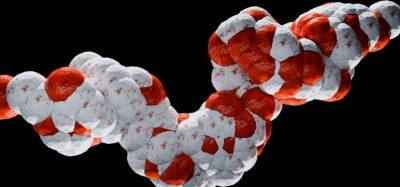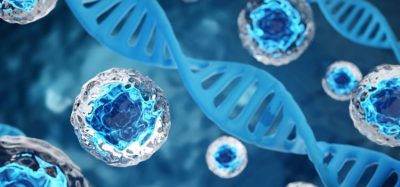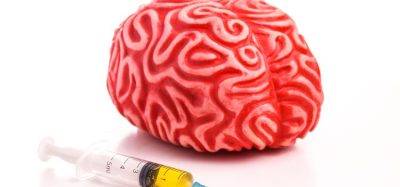Prodrugs: seeking perfection in an imperfect world
Posted: 28 June 2024 | Dave Elder (David P Elder Constultancy) | No comments yet
Balancing safety, efficacy and cost in drug development is challenging. Prodrugs offer potential solutions, but also introduce additional complexities, as Dave Elder explains.


The drug development and commercialisation processes are imperfect. The approved drug is the best possible combination of safety, efficacy, quality and cost factors.1 The balance between these competing factors changes depending on the nature of the therapeutic disorder – if the disease is life threatening then significant adverse events (AEs) are allowable;2 but typically, such black box warnings2 are not acceptable. Regulatory requirements are also continuously changing; requirements for drugs approved in the 1970s-80s are far less than seen today. This has significant impact on drug repositioning,3 eg, thalidomide is being re-positioned to treat leprosy and myeloma, but strict anti-pregnancy controls will be required.3
There are several formulation strategies available to address safety or efficacy deficiencies. If AEs are “cmax mediated” then blunting cmax using a controlled release formulation is an option.4 If there are safety concerns with respect to high levels of impurities, ie, N-nitrosamine drug substance-related impurities (NDSRIs) the drug can be re-formulated to include a nitrite scavenger and a pH modifying agent.5 Reduced clinical efficacy of low solubility drugs, eg, biopharmaceutics classification system BCS class II or IV drugs can often be addressed using either amorphous stabilised (eg, ritonavir6) or lipidic emulsion (eg, cyclosporine7) strategies – but stability is often an issue. Sometimes these formulation fixes are a short-term endeavour until a better molecule can be developed.
The role of prodrugs
Prodrugs are inactive versions of the parent drug, which have been chemically modified to enhance drug properties”
Prodrugs are inactive versions of the parent drug, which have been chemically modified to enhance physico-chemical, metabolic or biopharmaceutical drug properties. Prodrugs show enhanced performance (compared to the parent drug), which speeds up the process of drug development, saving time, money and effort.8 However, prodrugs are not a panacea. The increased complexity of the prodrug often negatively impacts on the product’s cost of goods (CoGs). The chemical stability of some of the simple ester and amide prodrugs can also be adversely impacted due to hydrolytic instability.
Those prodrugs that are converted to the active drug pre-systemically, eg, fosamprenavir, may be able to use pre-existing safety data for the drug, eg, amprenavir, in support of their approval. In contrast, prodrugs that are absorbed as the prodrug may be considered for a BCS-based biowaiver.8 However, such prodrugs will likely require additional efficacy and safety data.9
The metabolic conversion of prodrugs to active drugs can vary among individuals, leading to inconsistent therapeutic outcomes.”
The metabolic conversion of prodrugs to active drugs can vary among individuals, leading to inconsistent therapeutic outcomes. Prodrugs can also show unexpected side effects or interactions with other medications.10-12
Different prodrugs, for the same therapeutic condition, can show fewer side effects than the marketed form, particularly if the AEs are cmax-mediated. Interestingly, there is a court case pending in California which alleges that a company’s decision to delay commercialisation of a different prodrug was negligent.13 The plaintiffs could assert a negligence claim based on the company’s “alleged decision to delay commercialisation of…tenofovir alafenamide fumarate (TAF), once it allegedly acquired actual knowledge that TAF is safer than, and equally effective [to], tenofovir disoproxil fumarate (TDF).”
However, studies14 have highlighted that the chemical and enzymatic stability of bis-alkyloxycarbonyloxymethyl prodrug esters candidates of tenofovir was the chief challenge. Of the four stable prodrug esters identified, two showed increased bioavailability relative to the free acid and one was selected for development.
A claim for superior safety can only typically be supported using Phase III clinical studies”
However, it isn’t possible at this early stage to screen for more complex toxicities, ie, TDF had black box labels for bone and kidney damage.12 A claim for superior safety can only typically be supported using Phase III clinical studies. Thus, despite many decades of research on different drug/prodrug forms, “choosing the ideal prodrug form remains a challenge which is often solved empirically.”13,14
About the author


References
- Joshi HN. Drug development and imperfect design. Int J Pharm. 2007;343(1–2):1-3.
- Hagan JB, Ender E, Divekar RD, et al. Risk for Postmarket Black Box Warnings in FDA-Approved Monoclonal Antibodies. Mayo Clin Proc Innov Qual Outcomes. 2022 Feb;6(1):69–76.
- Amare GG, Meharie BG, Belayneh YM. A drug repositioning success: The repositioned therapeutic applications and mechanisms of action of thalidomide. J Oncol Pharm Pract. 2021Apr;27(3):673-678.
- Leppik IE, Hovinga CA. Extended-release antiepileptic drugs: A comparison of pharmacokinetic parameters relative to original immediate-release formulations. Epilepsia. 2013; 54(1):28–35.
- Bayne A_CV, Misic Z, Stemmler RT, et al. N-nitrosamine Mitigation with Nitrite Scavengers in Oral Pharmaceutical Drug Products. J Pharm Sci. 2023;112(7):1794-1800.
- Tambe S, Jain D, Meruva SK, et al. Recent Advances in Amorphous Solid Dispersions: Preformulation, Formulation Strategies, Technological Advancements and Characterization. Pharmaceutics. 2022Oct;14(10):2203.
- Yocum DE, Allard S, Cohen SB, et al. Microemulsion formulation of cyclosporin (Sandimmun Neoral) vs Sandimmun: comparative safety, tolerability and efficacy in severe active rheumatoid arthritis. On behalf of the OLR 302 Study Group. Rheumatology (Oxford). 2000;39(2):156-64.
- ICH M9 guideline on biopharmaceutics classification system-based biowaivers Step 5. 10 February 2020 EMA/CHMP/ICH/493213/2018 Committee for Medicinal Products for Human Use.
- Markovic M, Ben-Shabat S, Dahan A. Prodrugs for Improved Drug Delivery: Lessons Learned from Recently Developed and Marketed Products. Pharmaceutics. 2020;12(11):1031.
- Fagerholm U, Hellberg S, Alvarsson J, Spjuth O. Predicting Gastrointestinal Absorption of Prodrugs and their Drugs with the ANDROMEDA by Prosilico Software. [Internet] 2022. [cited 2023Jun] Available from: https://www.biorxiv.org/content/biorxiv/early/2022/11/26/2022.11.23.517725.full.pdf.
- Kuhlmann IRB. Codeine, morphine, and metformin: Common aspects of drug transport, drugdrug interactions, and pharmacogenetics. Clin Pharmacol Pharm Environ Med. 2021. [cited 2023Jun] Available from: https://portal.findresearcher.sdu.dk/en/publications/codeine-morphine-and-metformin-common-aspects-of-drug-transport-d.
- Agneshwar A, Wiesner J, Huynh T. Gilead Tenofovir Cases. Food Drug Law Institute. [Internet] 2024. [cited 2024Jun] Available from: https://www.fdli.org/.
- Wiemar AJ. Metabolic Efficacy of Phosphate Prodrugs and the Remdesivir Paradigm. ACS Pharmacol. Sci. 2020;3:613−626.
- Shaw JP, Sueoka CM, Oliyai R, et al. Metabolism and pharmacokinetics of novel oral prodrugs of 9-[(R)-2-(phosphonomethoxy)-propyl]adenine (PMPA) in dogs. Res. 1997;14:1824−1829.









